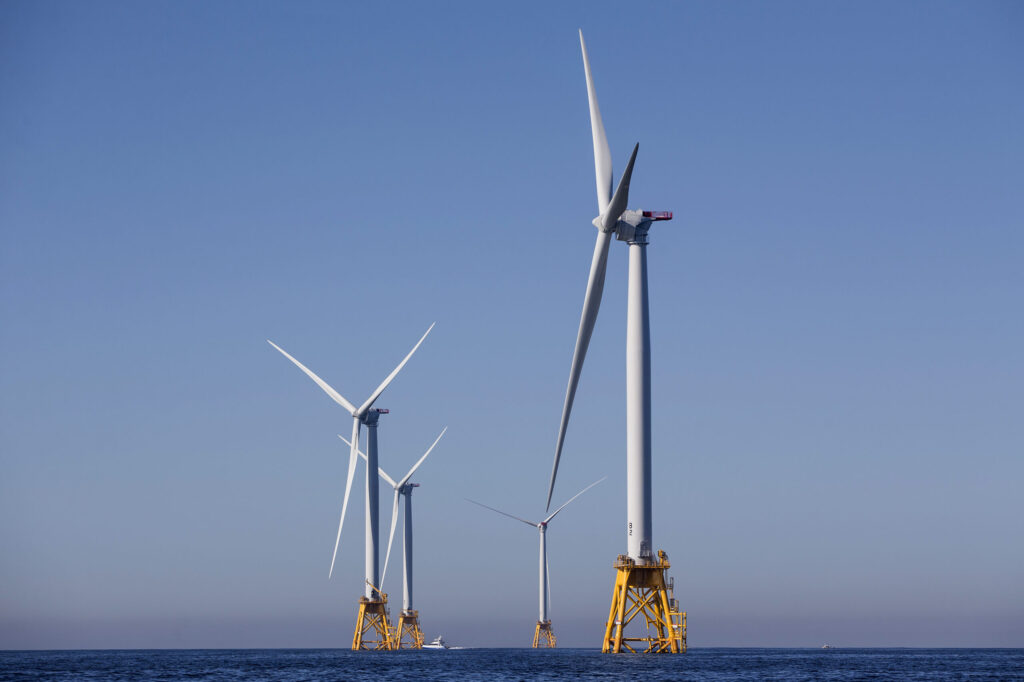(Photo by Scott Eisen/Getty Images)
Amid mounting opposition to offshore wind development off the coast of Oregon, the federal government announced Friday it is delaying a planned auction for the development of two wind energy sites as Gov. Tina Kotek urged the federal agency to halt all leasing plans and stop the auction.
The developments call into question the potential for future development of offshore wind energy off the Oregon coast. The state’s coastal communities, seafood industry and tribes fiercely opposed the federal agency’s plans, which concerned the governor.
In a letter on Friday to the Bureau of Ocean Energy Management, Kotek said Oregon had “no choice” but to withdraw from the intergovernmental task force that’s working on offshore energy to protect Oregon’s interests and engage more with the public. Her letter comes amid concerns from coastal communities and tribes about environmental impacts and threats to culturally and economically significant sites that are home to fish and other marine species.
Kotek said the agency’s “accelerated process” was worrisome, with the bureau announcing in late August that it would auction leases in October to developers to start planning facilities. That announcement led to the Confederated Tribes of the Coos, Lower Umpqua and
Siuslaw Indians suing the federal bureau, over its environmental assessment which greenlighted the projects. The tribes want the bureau to consider the future impacts of installing wind energy sites offshore.
“I believe that Oregon has no choice but to withdraw from the BOEM Oregon Intergovernmental Renewable Energy Task Force in order to ensure that Oregon’s interests are fully protected, and that we have adequate time to complete our state roadmap with engagement and participation of key constituencies and the public,” Kotek wrote in her letter. “Given this, I request that BOEM halt all current leasing activities off the coast of Oregon and terminate the current auction.”
The two sites would cover 61,200 acres off the coast of Coos Bay and nearly 134,000 acres off the coast of Brookings. The Coos Bay site is 30 miles from the coast and the Brookings area is 20 miles away and they could potentially generate more than 3.1 gigawatts of renewable energy, enough to power 1 million households.
The state’s planned Offshore Wind Roadmap, part of House Bill 4080 which passed this year, is meant to lay the foundation for offshore wind energy development that complies with labor standards and with community input.The bureau had planned to auction the sites on Oct. 15 but said in its announcement that officials decided to postpone the auction after receiving a notice of interest from only one of five qualified companies. Even after any plans are developed they would be required to undergo environment assessments and other reviews before the installations could take place.
Outlook is uncertain
In its statement, the federal agency said it would continue work with state, local and tribal officials on the issue and coordinate potential leases and engagement with communities. The federal agency said the state’s roadmap for offshore wind energy is one way to do that.
But the federal agency didn’t give a timeline for what might happen next or when it might come out with one.
Tribal Council Chair Brad Kneaper of the Confederated Tribes of Coos, Lower Umpqua and Siuslaw Indians welcomed the cancellation of the auction.
“Canceling the lease sale makes sense,” Kneaper said. “The tribe, elected officials, commercial fishing interests and others have consistently urged that BOEM delay moving forward with wind energy development until a better understanding is made of the impacts to fish, wildlife, the marine environment, and cultural resources important to the tribe.”
He said he looks forward to collaborating on the best places to develop wind energy that minimize the impacts to the coast and tribes.
In an initial environment assessment, federal officials found that the initial process of surveying and planning for proposed wind projects off the Oregon Coast would have minor to moderate impacts on marine habitats, marine mammals and commercial fisheries.
The plan for wind energy comes at a time when both the state and federal government are looking for ways to switch away from fossil fuels to clean, renewable energy to reduce harmful emissions. The current Climate Protection Program by Oregon’s Department of Environmental Quality – which needs final approval – set a target of reducing emissions from fossil fuels by 50% by 2035 and by 90% by 2050.
But wind energy is only a small fraction of the state’s energy use.
Since President Joe Biden took office in 2021, his administration has approved the first 10 commercial offshore wind projects, enough for about 15 gigawatts of clean energy – enough to power more than 5 million households. The federal government has had five offshore wind lease auctions in that time, including off the coasts of New York, New Jersey, and California.
This article was first published by the Oregon Capital Chronicle, part of States Newsroom, a nonprofit news network supported by grants and a coalition of donors as a 501c(3) public charity. Oregon Capital Chronicle maintains editorial independence. Contact Editor Lynne Terry for questions: info@oregoncapitalchronicle.com. Follow Oregon Capital Chronicle on Facebook and X.

